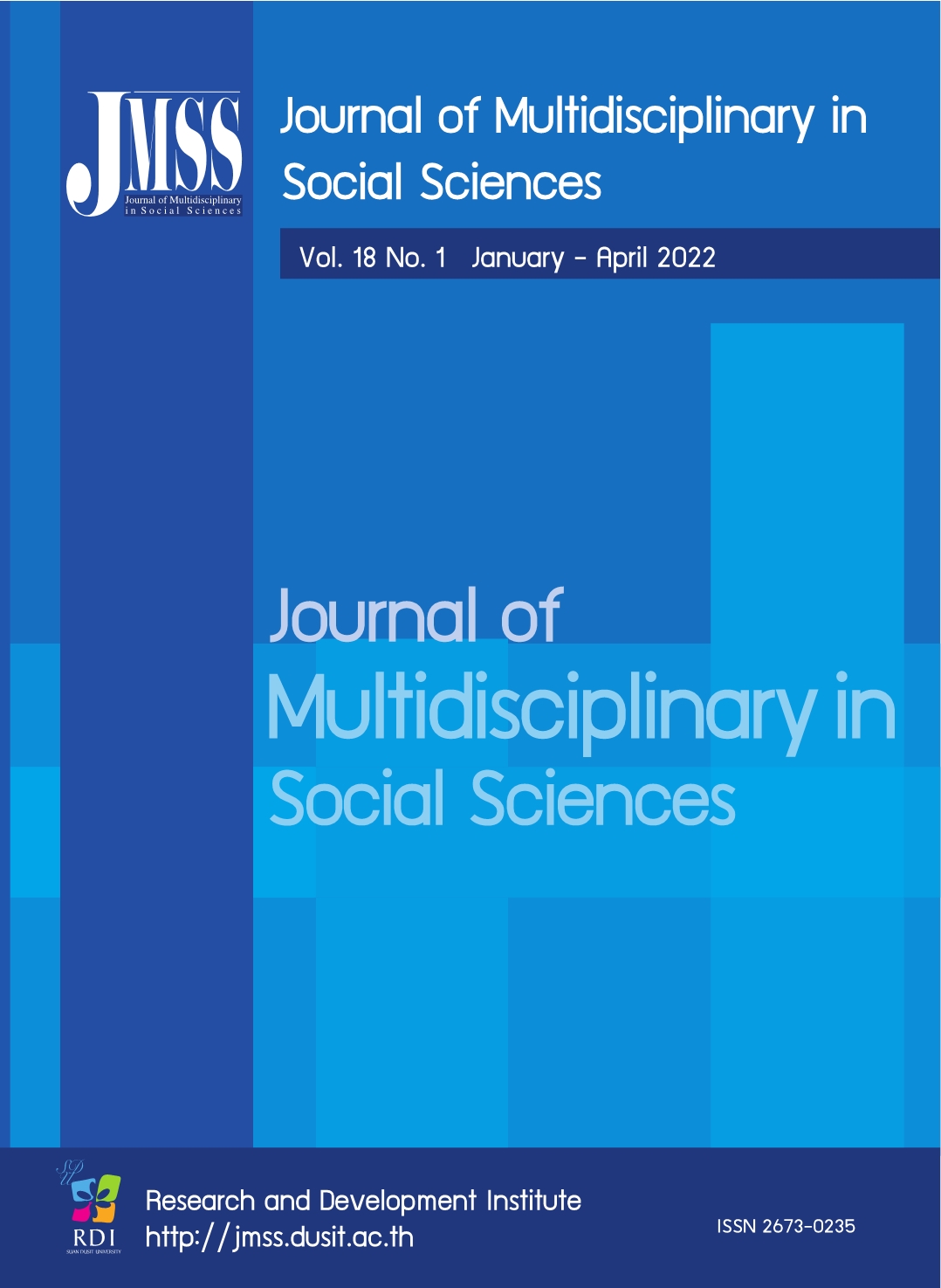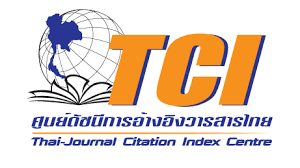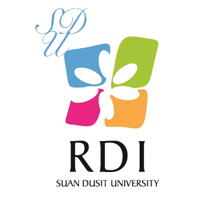Gastronomy Tourism in Ayutthaya World Heritage from Tourist’s Perspective
Keywords:
Gastronomy tourism, Food tourism, Tourist perspective, AyutthayaAbstract
Gastronomy tourism is typically characterized as the pursuit of a unique experience of eating and drinking in the originality of a dish and is indigenous to a place, region, or country, covers the basic themes of local dishes. The gastronomy tourism in Ayutthaya, Thailand has high potential especially in the many activities that link to World Heritage site, therefore it requires a study of the tourist ‘perception and motivation for travel. The aim of this study consist of the following: (1) study tourist’s motivation for gastronomy tourism in Ayutthaya World Heritage and (2) Conduct a factor analysis of the tourist’s motivation for gastronomy tourism in Ayutthaya World Heritage. A quantitative research approach was conducted by collecting data from 385 questionnaires. The results found that (1) tourist’s motivation to visit Ayutthaya was to make merit and pay respect to the Buddha followed by gastronomy tourism and their search for food information from food review pages. The gastronomy activities that tourists are interested in consisted of eating by the rivers site and visiting historical sites. Factors affecting the decision to travel to Ayutthaya for gastronomy tourism is a restaurant with good atmosphere and average food cost per meal of 1,000-1,500 baht. (2) The factor affecting motivation in gastronomy tourism in Ayutthaya World Heritage consisted of 1 latent variable and 7 observable variables. The relationship was in the range [0.223, 0.490] and the CFA affecting gastronomy tourism motivation showed that the gastronomy tourism product aspect was the factor affecting motivation has a maximum component weight followed by physical appearance and price, 77.30%, 75.40% and 61.70%, respectively.
References
Andersson, T. D., & Mossberg, L. (2017). Travel for the sake of food. Scand. J. Hospit. Tourism, 17(1), 44-58.
Bell, D., & Valentine, G. (1997). Geographies: we are what we eat. N. Z. Geogr, 53(2), 62.
Berbel-Pineda, J., Palacios-Florencio, B., Ramírez-Hurtado, J., & Santos-Roldán, L. (2019). Gastronomic experience as a factor of motivation in the tourist movements. Retrieved June 10, 2021, from https://www.sciencedirect.com/science/article/pii/S1878450X19300460
Boniface, P. (2017). Tasting Tourism: Travelling for Food and Drink. Routledge: Psychology Press.
Boyne, S., Williams, F., & Hall, D. (2002). On the trail of regional success: Tourism, food production and the Isle of Arran Taste Trail. Tourism and gastronomy, 91(114), 305-320.
Caplan, P. (1997). Food, Health, and Identity. Routledge: Psychology Press.
Chairatana, P., & Supanyo, P. (2021). The image of historical tourism in the area of the Ayutthaya Historical Park affecting the decision to visit of Thai tourists in Phra Nakhon Si Ayutthaya. Turkish Journal of Computer and Mathematics Education (TURCOMAT), 12(8), 2414-2419
Cochran, W. G. (1977). Sampling Techniques. (3rd Ed.). New York: John Wiley & Sons. Fields, K. (2002). Demand for the gastronomy tourism product: motivational factors. Tourism and gastronomy, 4(2), 36-50.
Frochot, I. (2003). An analysis of regional positioning and its associated food images in French tourism regional brochures. J. Trav, Tourism Market, 14(3-4), 77-96.
Green, G. P., & Dougherty, M. L. (2008). Localizing linkages for food and tourism: culinary tourism as a community development strategy. Community Dev, 39(3), 148-158.
Groves, A. M., (2001). Authentic British food products: a review of consumer perceptions. Int. J. Consum. Stud, 25(3), 246-254.
Hall, C. M., & Mitchell, R. (2007). Gastronomic tourism: comparing food and wine tourism experiences. Retrieved June 10, 2021, from http://www.tourismtaat.siam.edu/images/magazine/m8b1/bb8.pdf.
Henderson, J. C. (2009). Food tourism reviewed. British Food J, 111(4), 317-326.
Hjalager, A. M., & Corigliano, M. A. (2000). Food for tourists-determinants of an image. International journal of tourism research, 2(4), 281-293.
Karim, S. A., & Chi, C. G. Q. (2010). Culinary tourism as a destination attraction: An empirical examination of destinations' food image. Journal of hospitality marketing & management, 19(6), 531-555.
Kim, S., Park, E., & Lamb, D. (2019) Extraordinary or ordinary? Food tourism motivations of Japanese domestic noodle tourists. Tourism Management Perspectives, 2, 176-186.
Jermsittiparsert, K., Joemsittiprasert, W., & Phonwattana, S. (2019). Mediating Role of Sus-tainability Capability in Determining Sustainable Supply Chain Management in Tourism Indus-try of Thailand. International Journal of Supply Chain Management, 8(3), 47-58.
Kivela, J., & Crotts, J. C. (2006). Tourism and gastronomy: Gastronomy's influence on how tourists experience a destination. Journal of hospitality & tourism research, 30(3), 354-377.
McKercher, B., Okumus, F., & Okumus, B. (2008). Food tourism as a viable market segment: It's all how you cook the numbers. Journal of travel & tourism marketing, 25(2), 137-148.
Mitchel Hall, C., Sharples, L., Mitchel, R., Macionis, N., & Cambourne, B. (2003). Food Tourism Around the World: Development, Management and Markets. Burligton: Elsevier Ltd.
Quan, S., & Wang, N. (2004). Towards a structural model of the tourist experience: An illustration from food experiences in tourism. Tourism management, 25(3), 297-305.
Pavlidis, G., & Markantonatou, S. (2020). Gastronomic tourism in Greece and beyond: A thorough review. Retrieved June 10, 2021, https://www.sciencedirect.com/science/article/pii/S1878450X20301062
Ryu, K., & Jang, S. (2006). Intention to experience local cuisine in a travel destination: The modified theory of reasoned action. Journal of Hospitality & Tourism Research, 30(4), 507-516.
Schumacker, R. E., & Lomax, R. G. (2004). A beginner's guide to structural equation modeling. New Jersey: psychology press.
Sparks, B., Bowen, J., & Klag, S. (2003). Restaurants and the tourist market. International Journal of Contemporary Hospitality Management, 15(1), 6-13.
Sharples, L., & Hall, C. M. (2004). The consumption of experiences or the experience of consumption? An introduction to the tourism of taste. Food Tourism Around the World. Routledge
Shenoy, S. S. (2005). Food Tourism and the Culinary Tourist (Doctoral Dissertation). Clemson University. Silkes, C. A., Cai, L. A., & Lehto, X. Y. (2013). Marketing to the culinary tourist. Journal of Travel & Tourism Marketing, 30(4), 335-349.
Suanpang, P., & Jamjuntr, P. (2021). A chatbot prototype by deep learning supporting tourism. Psychology and Education, 58(4), 1902-1911.
Suanpang, P., Netwong T., & Chunhapataragul, T. (2021). Smart tourism destinations influence a tourist’s satisfaction and intention to revisit. Journal of Management Information and Decision Sciences, 24(S1), 1-10.
Suanpang, P., Sopha, C., Jakjarus, C., Leethong-in, P., Tahanklae, P., Panyavacharawongse, C., Phopun, N., & Prasertsut, N. (2021a). Innovation for human capital development in the tour-ism and hospitality industry (Frist S- Curve) on the Eastern Economic Corridor (EEC) (Chon Buri - Rayong - Chanthaburi - Trat) to enrich international standards and prominence to High Value Services for stimulate Thailand to be Word Class Destination and support New Normal paradigm. Bangkok: Suan Dusit University.
Suanpang, P., Songma, S., Chunhaparagul, T., Niamsorn, C., Netwong, T., & Panyavachara-wongse, C. (2021b). Innovation for Human Capital Big Data on Digital Platform to enhance the competitiveness of tourism and high value services to promotion Thailand to be a Word Class Destination and support New Normal paradigm. Bangkok: Suan Dusit University.
Suanpang, P., Sopha, C., Jaiann, A., Thanyakit, S., Chuamsompong, B., Dongjit, J., Rotprasoet, P., Webb, P., Netwrong, T., Niamsorn, C., Chunhaparagul, T. & Arnmanee, A. (2021c). Penetrating for a Prototype of Food Culture and Developing Food Decks in Ayutthaya Gastronomy the Port City of the East. Bangkok: Suan Dusit University.
Thanvisitthpon, N. (2016). The Tourism Development Policy for Thailand’s Ayutthaya Historical Park on the Locals’ Livelihoods and Government Responsibility. Silpakorn University Journal of Social Sciences, Humanities, and Arts, 16(2), 1-20.
Van Westering. (1999). Heritage and gastronomy: the pursuits of the ‘new tourist’. Int. J. Herit. Stud, 5(2), 75-81.
Viljoen, A., Kruger, M., & Saayman, M. (2017). The 3-S typology of South African culinary festival visitors. Int. J. Contemp, Hospit. Manag, 29(6), 1560-1579.
Downloads
Published
How to Cite
Issue
Section
License

This work is licensed under a Creative Commons Attribution-NonCommercial-NoDerivatives 4.0 International License.








